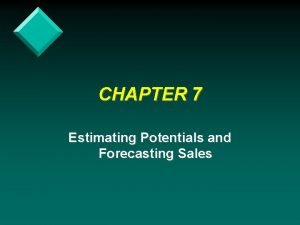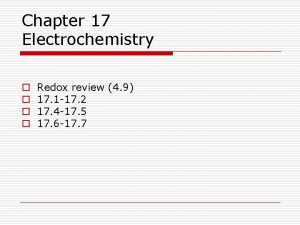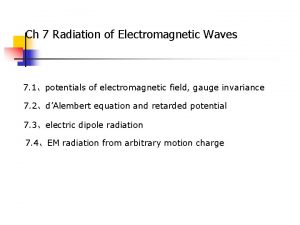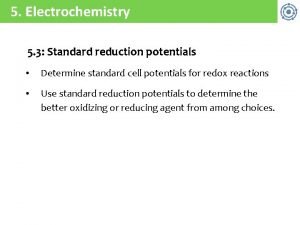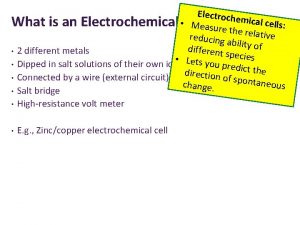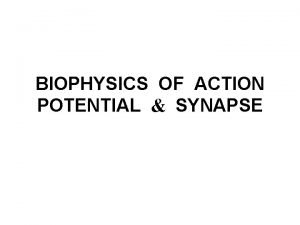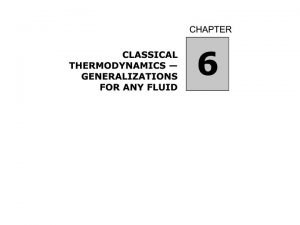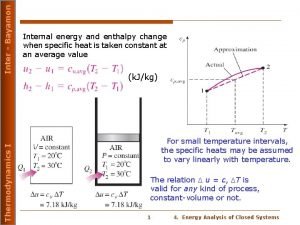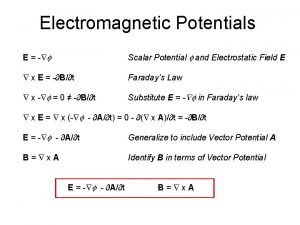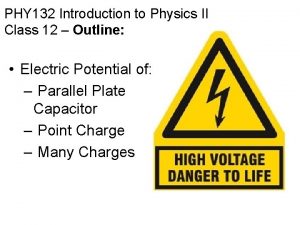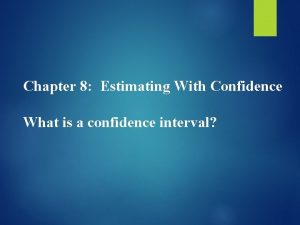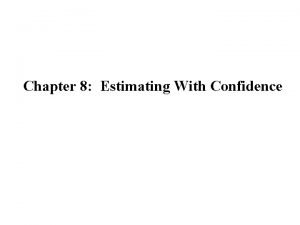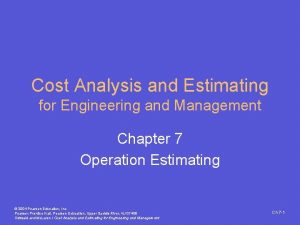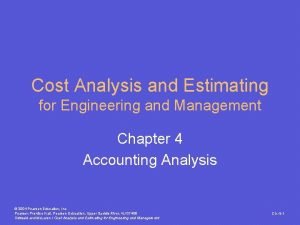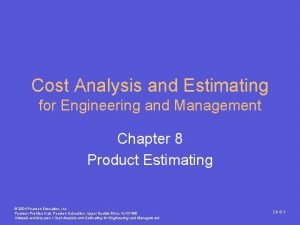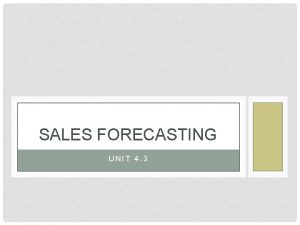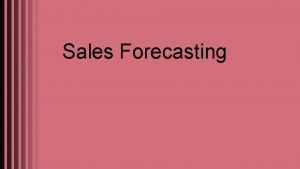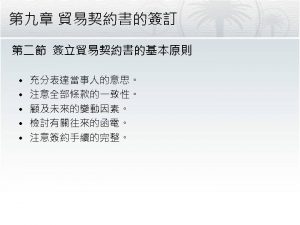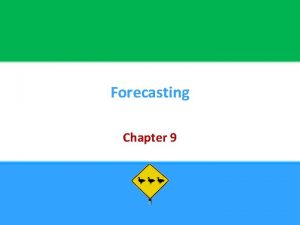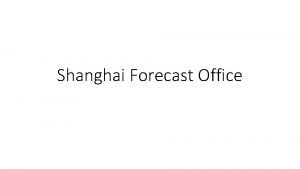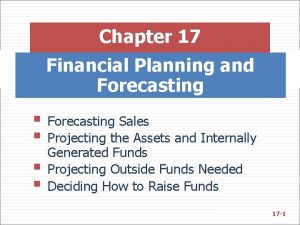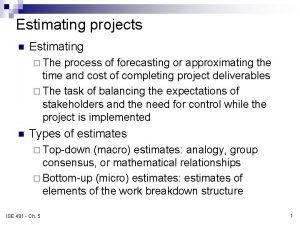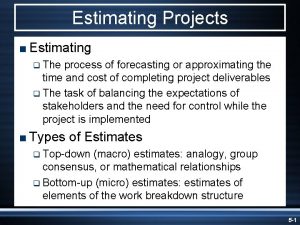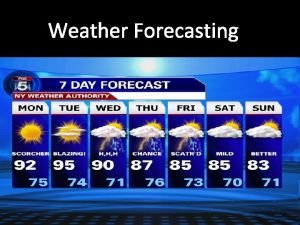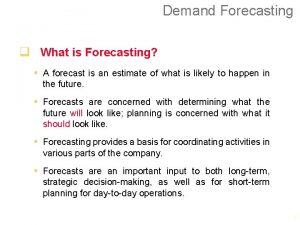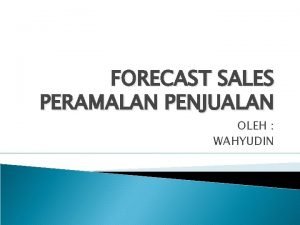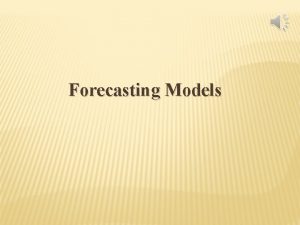CHAPTER 7 Estimating Potentials and Forecasting Sales FORECAST





























- Slides: 29

CHAPTER 7 Estimating Potentials and Forecasting Sales

FORECAST v. A forecast is a prediction of a future state

IMPORTANCE OF FORECASTS v Determining sales force size v Designing territories v Establishing quotas and budgets v Determining compensation v Evaluating performance

MARKET POTENTIAL v Best possible level of industry sales for a product in a specific market over a stated time period

BUYING POWER INDEX (BPI) v. A composite measure of regional buying power v Composed of area’s percentage of – US disposable income – US retail sales – US population

SALES POTENTIAL v The best possible share of the market potential that a firm can achieve

SALES FORECAST v Level make of sales that a firm expects to

FORECASTING METHODS

TOP-DOWN FORECASTING v Use annual Survey of Buying Power (Sales and Marketing Management) v Example- To get state-by-state sales forecast – 6% of U. S. retail sales come from New York – Shoe mfg. takes U. S. sales forecast and multiplies by. 06 for New York state forecast

DETERMINING MARKET AND SALES FORECASTS v v v v v Market factor methods Regression analysis Surveys of buyer intentions Test markets Executive opinion Delphi Technique Sales Force Composite Projection of Trends Capacity Based Forecasts

MARKET FACTOR METHOD v Market factors are elements that cause demand for a product or are related to the demand of the good

MARKET FACTOR FORECASTING--EXAMPLE A manufacturer of baby playpens estimated that the firm sold 16 playpens for every 1000 births. Using births as a market factor, compute a sales forecast v Estimated births, 1999: 4, 000 v Rate of sales: 16 per 1, 000 v Sales forecast: 64, 000

MARKET FACTOR-ADVANTAGES v High validity v Simplicity v Inexpensive

REGRESSION ANALYSIS v We predict how one variables (sales) is affected by change in other variables (advertising expenditures, number of sales calls, etc. ) v Territory Sales = a + b 1 (factor) + b 2 (factor) + b 3 (factor) v a = constant; b’s = regression coefficients

REGRESSION ANALYSIS v Use of multiple factors provides a high degree of reliability v Many do not understand the concept

SURVEYS OF BUYERS INTENTIONS v Contact customers and question them v High cost v Time consuming v Socially acceptable answers

TEST MARKETS v Accurate v Considerable time and effort

EXECUTIVE OPINION v Simple v Quick v Unscientific v Managers market somewhat removed from

DELPHI TECHNIQUE v Consensus approach

SALES FORCE COMPOSITE v Ask the sales reps v Sales people are poor forecasters

PROJECTION OF TRENDS v Use sales data for the past 10 years v Exponential smoothing

PROJECTION OF TRENDS v Trend Component – General trend due to long-term factors (e. g. , demographic population shifts, lifestyle changes, technological advances etc. ) v Cyclical Component – Patterns lasting more than a year due to cyclical changes in the economy (e. g. , recession, inflation)

PROJECTION OF TRENDS v Seasonal Component – Trends within one-year period from seasonal change (e. g. , lower swimming pool sales in fall and winter) v Irregular Component (Residual) – Random deviations due to unanticipated, nonrecurring factors

CAPACITY BASED FORECASTS v Production limitation capacity becomes

GUIDELINES FORECASTING v Minimize the number of market factors v Use logic v Use more than one method v Recognize limitations v Use max/min analysis v Understand mathematics and statistics

SALES QUOTAS va performance goal assigned to a marketing unit for a specific period of time v is related to the sales forecast

SALES QUOTAS-PURPOSES v Furnish goals and incentives v Control activities of sales personnel v Evaluate productivity v Compensation v Control selling expenses v Evaluate sales contest results

SALES QUOTAS--TYPES v Sales volume v Gross margin or net profit v Expense v Activity v Combination

FROM THE TEXT. . . v Read all of Chapter 7 except: – Chain Ratio Method (page 325) – SIC Method (pages 327 - 328) – Scrappage Method (pages 328 - 329) – Naïve approach / MAPE (pages 335 -336)
 Sales force composite
Sales force composite Rumus least square
Rumus least square Subliminal fringe
Subliminal fringe Sources of bioelectric potentials
Sources of bioelectric potentials Decremental graded potential
Decremental graded potential Characteristics of graded potential
Characteristics of graded potential Postsynaptic potentials
Postsynaptic potentials Table of standard reduction potentials
Table of standard reduction potentials Lienard-wiechert potentials
Lienard-wiechert potentials Standard cell potentials
Standard cell potentials Task 8 electrode potentials answers
Task 8 electrode potentials answers Use the tabulated half-cell potentials to calculate
Use the tabulated half-cell potentials to calculate Summation of postsynaptic potentials
Summation of postsynaptic potentials Thermodynamic
Thermodynamic Free energy
Free energy Gibbs free energy
Gibbs free energy Cp in thermodynamics
Cp in thermodynamics Scalar potential
Scalar potential An electron follows the trajectory shown from i to f
An electron follows the trajectory shown from i to f Collaborative supply chain forecasting
Collaborative supply chain forecasting Sales force specialization
Sales force specialization Difference between sales letter and sales promotion letter
Difference between sales letter and sales promotion letter Sales force deployment
Sales force deployment Sales quotas and territories
Sales quotas and territories Chapter 8 estimating with confidence
Chapter 8 estimating with confidence Suppose your class is investigating the weights of snickers
Suppose your class is investigating the weights of snickers Chapter 8 estimating with confidence
Chapter 8 estimating with confidence Cost analysis and estimating for engineering and management
Cost analysis and estimating for engineering and management Cost analysis and estimating for engineering and management
Cost analysis and estimating for engineering and management Cost analysis and estimating for engineering and management
Cost analysis and estimating for engineering and management
